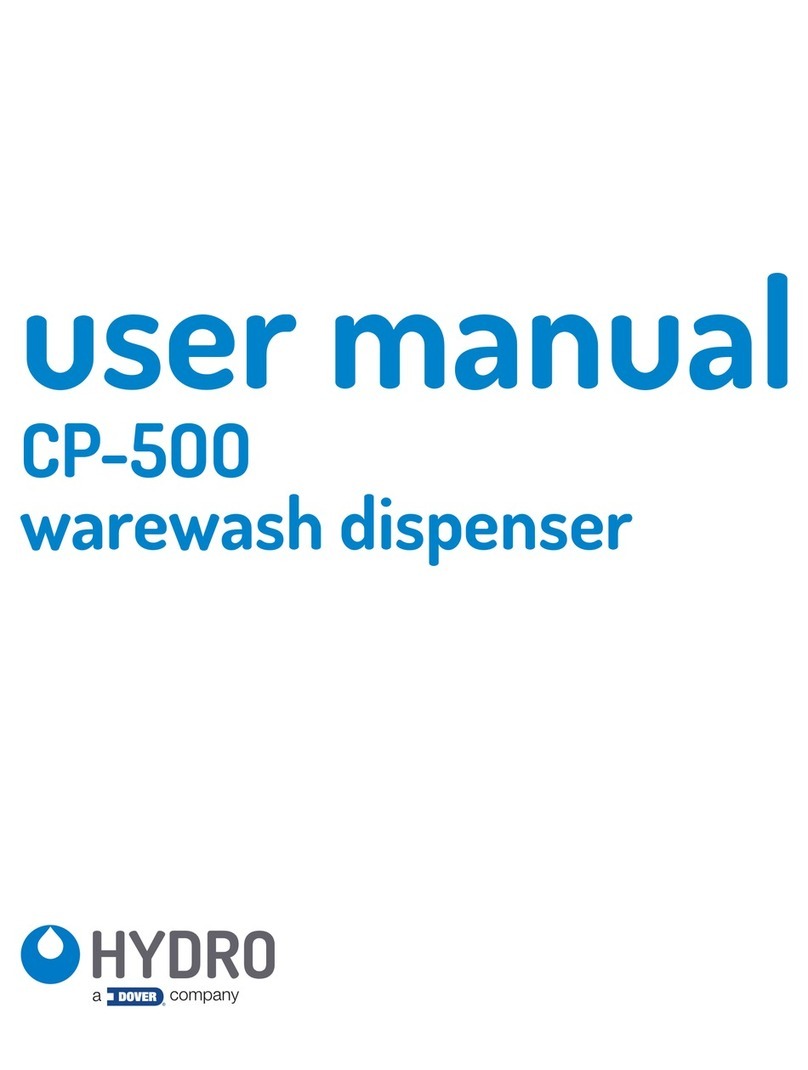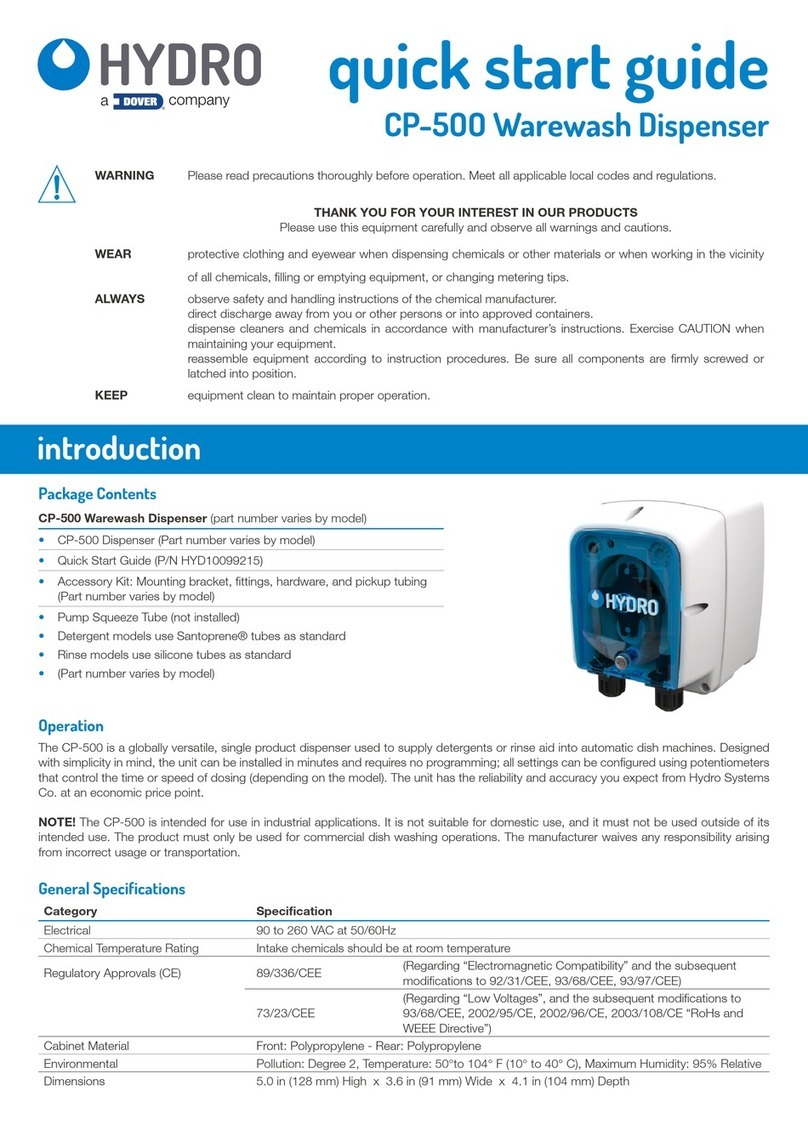
5
2. Installation
CAUTION Before an installation takes place it is
advisable to complete a site survey to ensure
the EvoRinse can be installed in a position that
meets all the requirements below.
CAUTION Do not install unit in an ATEX environment
WARNING Electrical installation should be completed
by a qualified electrician. All local and
national electrical regulations are to be
observed.
2.1 Site Survey & Installation Requirements
• Unit is to be installed by a trained technician; all local and
national water regulations are to be observed.
• Unit must be installed indoors, in an area that does not
suffer excess temperature changes, direct sunlight, frost or
precipitation of any kind.
• The area must be free of high levels of EMC disturbance.
• Ensue the unit is mounted in an accessible location, above
the height of the dishwasher detergent and rinse inlet
connections.
• Installer to ensure the suitability of the wall or mounting
substrate, which should be flat and perpendicular to the
floor.
• Unit location should be well lit for any maintenance, and
should be free of high levels of dust particulates.
• Scheduled maintenance should be carried out on the unit
at least once per year.
• It is a legal requirement that all water supply hose sets must
be compliant with IEC 61770.
• Ensure that the chemicals being used are compatible with
the tubing supplied. If you are unsure, please contact your
local distributor.





























